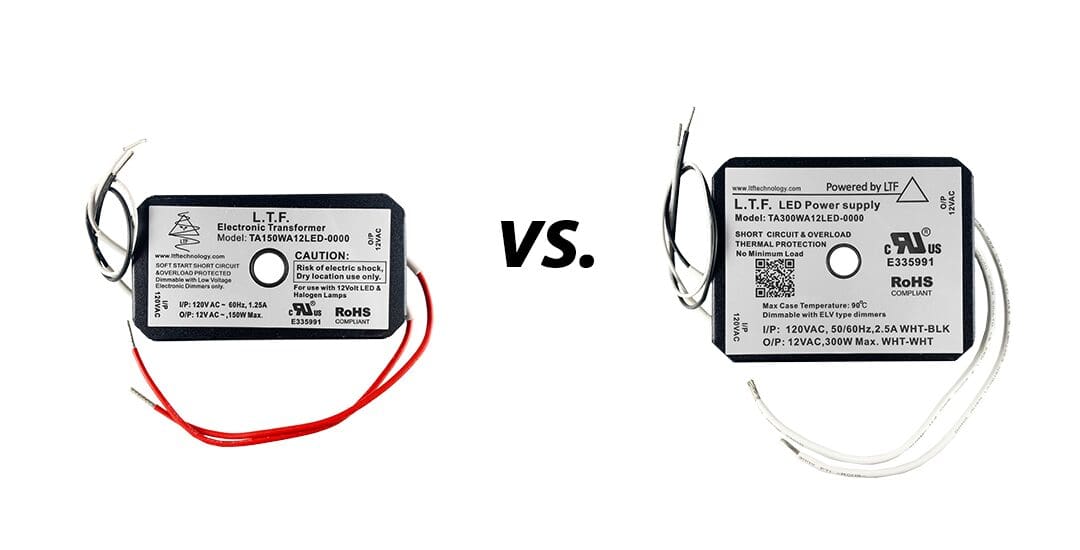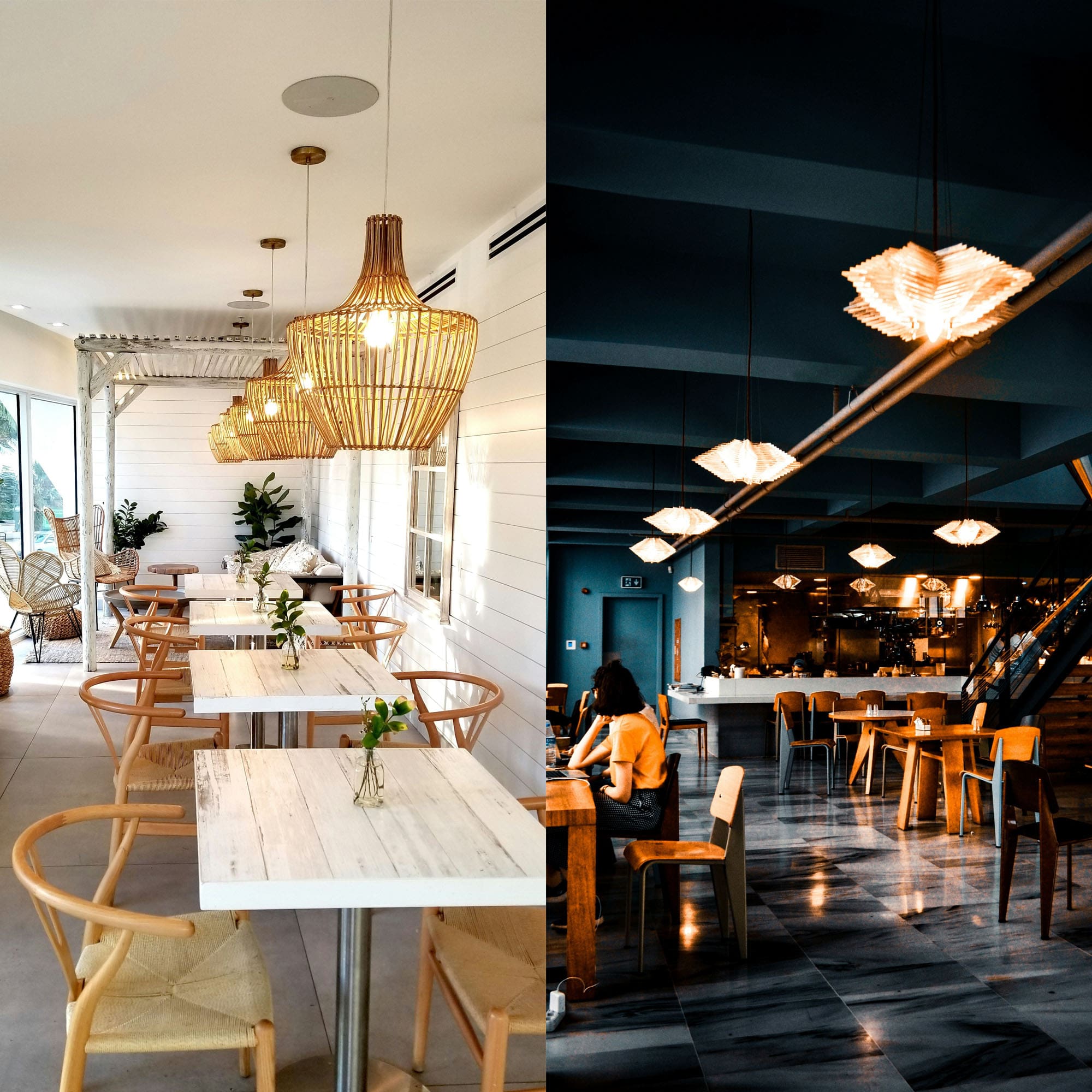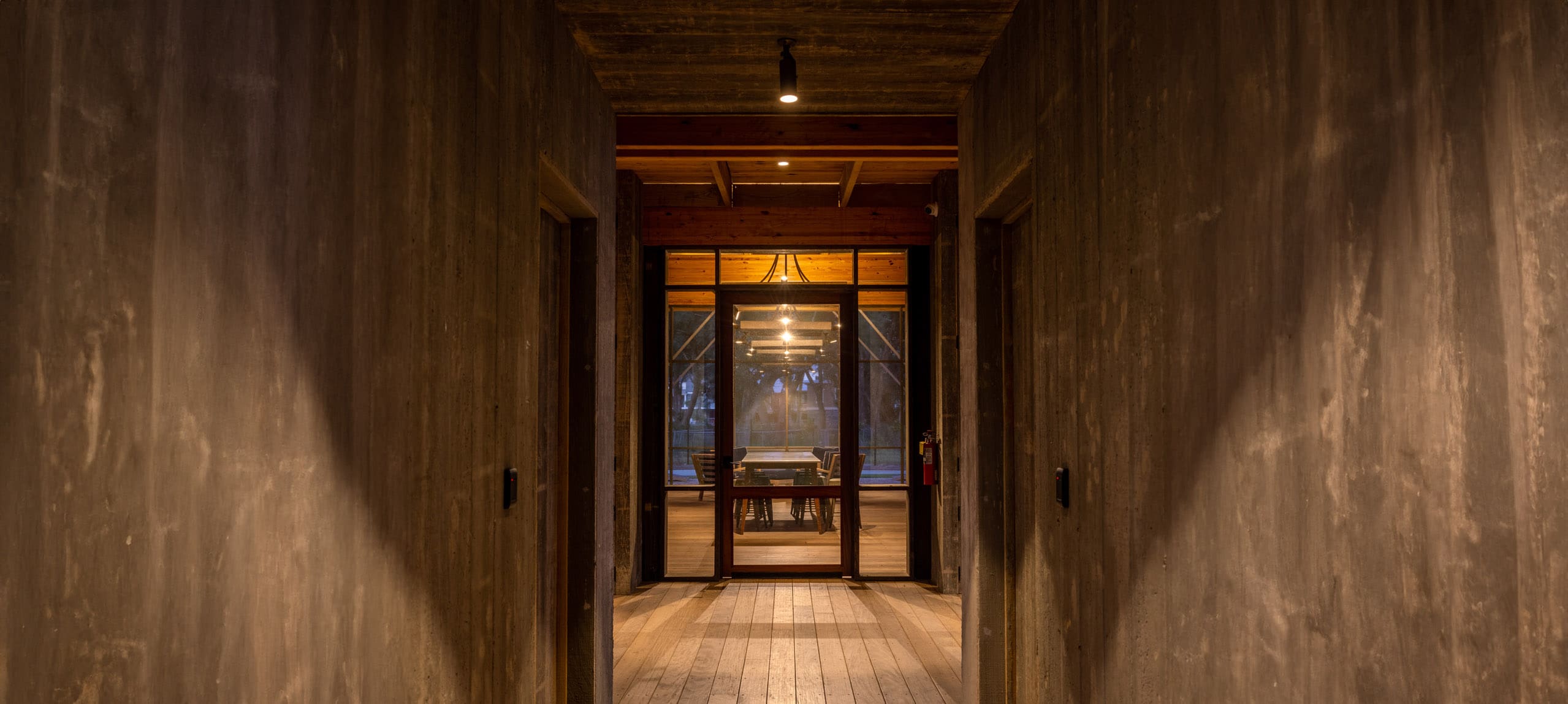The choice between a 150W and a 300W transformer – it’s about priorities and asking the right questions.
- Will your lighting application exceed 80% of the maximum transformer capacity in wattage?
- Do you plan on expanding your lighting application in the future?
- Are you budget-conscious?
Let’s take a quick look at the purpose of these devices and what you need to know when buying transformers:
Lighting Transformers in Modern Environments
Lighting transformers play a key role in modern lighting systems, especially when used in conjunction with LED bulbs. It ensures the power supply matches the specific requirements of lighting fixtures and bulbs. LEDs operate at lower voltages than traditional bulbs, making the role of the transformer crucial for their functionality and safety.
The primary function of a lighting transformer is to step down voltage levels to suit different bulbs, devices, or systems. This ensures that LED bulbs receive the right power level, preventing potential damage and enhancing their durability. By choosing the right transformer, you’re extending the lifespan of your lighting system, maintaining brightness, and preventing future headaches.
A Historical Look: Lighting Transformer Technology
In the early days, transformers were bulky, magnetic-based devices. Magnetic transformers are still used today, but primarily for landscape applications where wire runs are much longer than what is required for indoor installations, but that’s for another discussion! The advent of LED technology and the rise in low-voltage lighting applications marked a significant technological shift. No-load electronic transformers for LED lights became smaller, more efficient, and better suited for a range of interior lighting scenarios.
Calculating the Right Transformer Size for Your Needs


Use the simple formula of 150 x .8 or 300 x .8.
Simply multiply the transformer’s rated capacity by .8 (80%). For a 150-watt transformer, this comes out to a maximum load of 120W. If after adding up all your lights, you come up under that number and you don’t plan on future expansion, then that’s what you should go with. If you’re over 120W or you plan on adding more lights later, then a 300W Transformer is your answer.
Practical Applications & Solutions
The application of a lighting transformer in a lighting setup should align with the scale and function of the space being illuminated. In a home setting, for instance, a 150W transformer is often sufficient for providing ambient over a kitchen island or providing lighting in smaller areas. It’s ideal for setups that require a modest number of low-wattage LED lights.
Commercial properties like retail spaces and plazas often demand more extensive low-voltage lighting solutions. Here, a 300W transformer may be of more practical use. It supports a larger array of lights, from security lighting to feature illumination, ensuring consistent electrical performance across a more demanding setup.

Shining a Light on the Right Choice
As outlined, the key to selecting the ideal transformer — whether 150W or 300W — primarily relies on your demand based on the wattage per bulb and staying within the 80% rule, along with considerations for expansion. In general, for smaller lighting systems, the 150W transformer is efficient, cost-effective, and ideal for modest setups. The 300W transformer, however, is better for larger installations or when future expansion is expected.
By carefully considering factors such as total load requirements, efficiency under various loads, and budget constraints, you can determine the transformer size that’s best suited to your lighting setup. For further assistance in selecting the right transformer, don’t hesitate to contact us.


